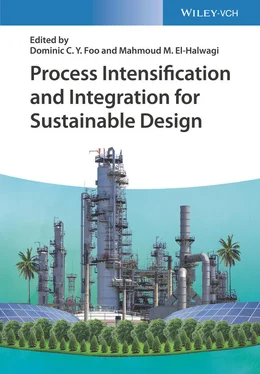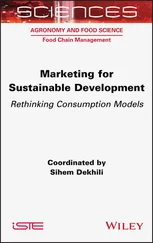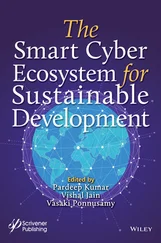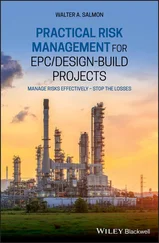A key observation is the increase of both revenue and processing costs with increasing NGL content. As measured by ROI, all feeds (including the high acid case) are worth treating, except the high methane case (Feed #1). From the sensitivity analysis, it can be concluded that for the base case, shale gas processing is still profitable for even the highest feedstock prices. However, a drop of one standard deviation in product prices will make processing highly unprofitable.
Included in the Appendix are key parameters for the process simulations. Further guidance can be found in the Bryan Research & Engineering guide [24].
Appendix A: Key Parameters for the Dehydration Process
2.A
Table 2.A.1 Dehydration column parameters for the base case (Feed #3).
| Column |
Feed flow rate (MMSCFD) |
T (°F) |
P (psig) |
Number of trays |
| Contactor |
150 |
101 |
996–998 |
2 |
| Regenerator |
0.830 |
214–308 |
0–4 |
4 |
Feed flow rate is a standard vapor volumetric flow rate.
Table 2.A.2 Makeup composition for the base case (Feed #3).
| Stream |
Water (mass%) |
TEG (mass%) |
| Makeup |
0.1 |
99.9 |
Table 2.A.3 Glycol circulation rate for the base case (Feed #3).
| Stream |
Circulation rate (gal/lb) |
| 21 |
2–5 gal glycol/lb water in stream 1 |
Appendix B: Key Parameters for the Turboexpander Process
2.B
Table 2.B.1 Demethanizer column parameters.
| Column |
Total feed flow rate (MMSCFD) |
T (°F) |
P (psig) |
Number of trays |
Light/heavy key |
| Demethanizer |
202 |
−111 to 65.4 |
250–254 |
10 |
Methane/ethane |
Feed flow rate is a standard vapor volumetric flow rate.
Table 2.B.2 Low temperature separator (LTS) inlet temperature.
Table 2.B.3 Outlet pressure for the pressure changing equipment.
| Stream |
P (psig) |
| 13 |
250 |
| 14 |
255 |
| 21 Residue gas |
900 |
Appendix C: Key Parameters for the Fractionation Train
2.C
Table 2.C.1 Fractionation train column parameters for the base case (Feed #3).
| Column |
Feed flow rate (MMSCFD) |
T (°F) |
P (psig) |
Number of trays |
Light/heavy key |
| Deethanizer |
27.1 |
38.8–159 |
285–292 |
35 |
Ethane/propane |
| Depropanizer |
17.9 |
104–187 |
190–193 |
36 |
Propane/ i ‐butane |
| Debutanizer |
8.09 |
163–219 |
135–140 |
60 |
n ‐Butane/pentane |
| C 4splitter |
5.74 |
147–179 |
120–140 |
60 |
i ‐Butane/ n ‐butane |
Feed flow rate is a standard vapor volumetric flow rate.
Appendix D: Key Parameters for the Acid Gas Removal System
2.D
Table 2.D.1 Acid gas removal column parameters.
| Column |
Feed flow rate (MMSCFD) |
T (°F) |
P (psig) |
Number of trays |
| Contactor |
150 |
100–110 |
796–800 |
7 |
| Regenerator |
150.18 |
210 |
8–12 |
10 |
Feed flow rate is a standard vapor volumetric flow rate.
Table 2.D.2 Makeup composition.
| Stream |
Water (mass%) |
MDEA (mass%) |
Piperazine (mass%) |
| 18 – Makeup |
55 |
40 |
5.0 |
Table 2.D.3 Key heat exchange equipment outlet temperatures.
| Stream |
T (°F) |
| 8 |
210 |
| 22 |
110 a |
a Set at 10 °F warmer than inlet gas.
| AFC |
annualized fixed cost (depreciation) |
| AOC |
annual operating cost |
| Btu |
British thermal unit |
| CO 2 |
carbon dioxide |
 |
purchased cost of equipment q |
| FCI |
fixed capital investment |
| FCI i |
fixed capital investment for a given processing unit |
| FCI S |
salvage value of the fixed capital investment |
| ΔFL mix |
average explosiveness of a mixture |
 |
Hand factor for equipment q |
| gal |
gallons |
| GJ |
gigajoules |
| h |
hours |
| H 2S |
hydrogen sulfide |
| HA |
high acid |
| HV m |
average mass heating value |
| IROI |
incremental return on investment |
| kWh |
kilowatt hours |
| lb |
pounds |
| LFL mix |
lower flammability level of a mixture |
 |
mass flow rate |
| MDEA |
methyl diethanolamine |
| MM$ |
million dollars |
| MMBtu |
million British thermal units |
| MMSCFD |
million standard cubic feet per day |
| MSCF |
thousand standard cubic feet |
| N |
plant lifetime (number of years) |
| N 2 |
nitrogen |
| NGL |
natural gas liquid |
| N np |
number of non‐particulate processing steps |
| N OL |
number of operators per shift |
| P |
number of processing steps where particulate solids are handled |
| P |
average pressure |
| PRI |
process route index |
| psig |
pounds per square inch of gauge pressure |
| ROI |
return on investment |
| SCF |
standard cubic feet |
| TAC |
total annualized cost |
| TEG |
triethylene glycol |
| TCI |
total capital investment |
| ΔTCI |
change in total capital investment for a given additional case |
| UFL mix |
upper flammability limit of a mixture |
| VC i |
total variable cost for each process unit |
| WCI |
working capital investment |
| yr |
years |
| ρ |
average fluid density |
1 1 Al‐Douri, A., Sengupta, D., and El‐Halwagi, M.M. (2017). Shale gas monetization – a review of downstream processing to chemicals and fuels. Journal of Natural Gas Science and Engineering 45: 436–455. https://doi.org/10.1016/j.jngse.2017.05.016.
2 2 WVU. (2016) Uncoventional resources. http://pages.geo.wvu.edu/∼jtoro/Petroleum/24_Unconventional-1.pdf (accessed 08 January 2017).
3 3 Hill, R.J., Jarvie, D.M., Zumberge, J. et al. (2007). Oil and gas geochemistry and petroleum systems of the fort worth basin. AAPG Bulletin 91: 456–457. https://doi.org/10.1306/11030606014.
Читать дальше















